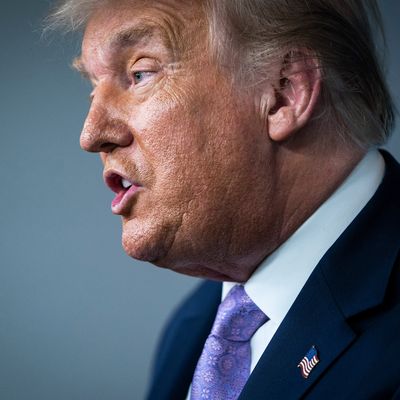
The term “relief” generally refers to an action that quickly (if not permanently) addresses a critical problem and produces immediately beneficial effects. With one exception, the president’s weekend round of orders aimed at side-stepping congressional gridlock over coronavirus stimulus negotiations did not supply the relief he promised in promulgating them.
Thanks to well-established emergency powers over federally guaranteed student loans, Trump’s extension of the CARES Act’s suspension of student-loan payments and interest for another three months should have its intended effect for an estimated 35 million borrowers, though the timing could create some administrative problems, and those with privately held student loans won’t benefit.
But as the generally negative reaction shows, the rest of Trump’s orders are producing widespread legal and administrative confusion, in part because so much of his scheme relies on actions by others that may not materialize at all. The prime example is the measure no one really wanted: Trump’s pet idea of cutting payroll taxes — or actually, deferring them in the dubious anticipation that Congress will later cancel the deferred payments. It will be an empty gesture altogether unless employers agree to bump up payrolls to reflect the deferral, which they very likely won’t do, as Diana Ransom explains at Inc:
For businesses, the prudent thing is to hold tight and not change withholdings for either the payroll tax or income taxes, says Joe Manganelli, founder of the New York City-based strategic advisory and financial management firm Calculate. His advice? Employers should hang on to the employee portion of payroll taxes that would normally be paid to the government. “This obviously goes completely against the president’s intention of putting more money in people’s pockets,” but, he adds, “it’s a safer move when the result is unclear.”
Similarly, Trump’s convoluted plan for reducing while extending the CARES Act’s supplemental unemployment insurance payments depends on immediate state government compliance, including a state “match” requirement that will astound governors and legislators from both parties who are begging Congress for hundreds of billions of dollars in new assistance to prevent a fast-approaching fiscal catastrophe. It appears the new, degraded supplemental UI benefit may require a new administrative system at the state level, as my colleague Chas Danner noted over the weekend:
The memorandum also necessitates setting up a brand-new “lost wages assistance” program to deliver the aid instead of using the traditional unemployment system. Setting up a new program would most likely take months for states to do, and many states already had significant problems figuring out how deliver the CARES Act assistance earlier this year. Now they’ll have to set up another one. If they don’t, or can’t afford to, then residents of those states will not receive the extra unemployment insurance. That doesn’t just pass the buck, it tries to pass the political cost of the missing benefits onto state leaders.
Yet another segment of Trump’s orders leaves a lot of questions unanswered: his alleged effort to extend the CARES Act’s moratorium on evictions in federally assisted rental properties. Trump’s “memorandum” on this topic doesn’t do what he says it does, as the Washington Post reports:
Trump has said many times in recent days he wants to prevent evictions, but his latest executive order does not ban evictions. Instead, Trump calls for Health and Human Services Secretary Alex Azar and Centers for Disease Control and Prevention Director Robert Redfield to “consider” whether an eviction ban is needed.
If this “consideration” takes a while, Trump’s order could even backfire by encouraging landlords to accelerate evictions before they are suspended again. But in any event, his initiative short-circuits what was beginning to look like growing bipartisan support for direct aid to renters so that they can stay in their homes without driving landlords out of the housing market.
Now all this confusion Trump has sowed exists even without the almost certain litigation the dubious legal rationales he is relying on will invite. Indeed, you get the sense that provoking Democrats into politically uncomfortable lawsuits may be an important part of the administration’s strategy, as the New York Times reports based on comment Treasury Secretary Steven Mnuchin made on Fox News Sunday:
[Mnuchin] insisted that White House lawyers approved the moves as legal and dared Democrats to take the White House to court to stop money from being released to jobless Americans. “If the Democrats want to challenge us in court and hold up unemployment benefits to those hardworking Americans that are out of a job because of Covid, they’re going to have a lot of explaining to do,” Mr. Mnuchin said.
Mnuchin was alluding to the particularly vulnerable part of Trump’s orders that offset part of the cost of the extended UI benefits by reallocating money from FEMA disaster contingency funds (technically, the order allows states to apply for FEMA grants to cover its new UI costs under a program that requires a state “match”). This gambit is arguably an unconstitutional effort to usurp Congress’ exclusive power to appropriate federal funds.
The more you look at these orders, the less they appear to accomplish. Democrats eager to thwart Trump or at least keep him from taking credit for a responsiveness to the pandemic he has never shown will be tempted to rush into court. They might be better advised to stand aside as the rickety structure of Trump’s intervention collapses of its own weight. It may happen so quickly that White House/congressional negotiations can resume without much delay.






























